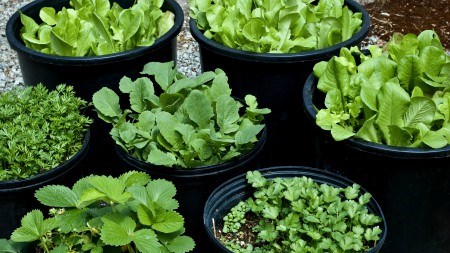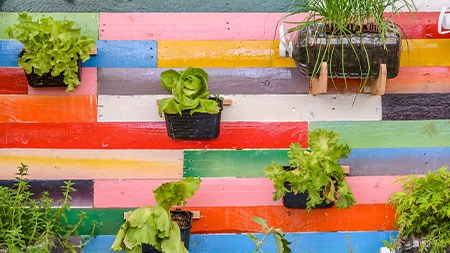It goes without saying that making a new space your own is an important part of settling into a home, especially when you are a renter. Apart from personalising your décor and home furnishings, creating your own garden offers another way of making a house a home. But what happens when it comes time to leave?
Not only does gardening give us the opportunity to grow our own produce or decorate the outside of our homes with natural beauty, but experts say that gardening offers a variety of health benefits which is why it’s such an important component to include into our lifestyles, where possible. That being said, putting in so much effort only to move in a few months or years’ time can be disheartening, so we’ve put together a handy guide on how to create a portable garden that you can take with you when it comes time for you to leave.
The first step in creating a sustainable and portable garden is choosing the right plants, so do your research and consider each option carefully. Bear in mind that the plants that you choose need to be robust enough to survive a move or two in the future so hardier, less fussy plants are the way to go. It’s also worthwhile choosing perennials so that they are sure to survive whatever season you decide to move in. Also consider whether your choice of plants need direct sunlight or prefer shelter as this will dictate where and how you choose to plant them.
When it comes to choosing the right containers for your plants, it’s best to consider what will be easiest to move when the time comes, so opt for lightweight and easy to handle options where possible. Also be sure that whatever containers you choose have adequate draining holes, so that any excess water can drain properly without causing the soil to remain damp and rotting the plant’s root system. If need be, drill or punch more holes at the bottom of your container.
With this in mind, here are some creative potting suggestions to get you started:
1. Polystyrene boxes
While we normally equate polystyrene boxes with take-aways, they can serve as handy and super mobile containers for a myriad of plants – you can even go with polystyrene cups! Be sure to make holes in the bottom for drainage before filling them with a mix of good quality soil and compost. Plant-wise, you can grow a range of smaller flowers and delicious veggies in these – anything from daisies to lettuce, baby spinach and herbs! Easy to plant, easy to move!
2. Plastic pots
Perhaps the most common of conduits when it comes to portable gardens, plastic pots are super easy to grow things in and move when the time comes. They are lighter than your ceramic or terracotta pots and less prone to breaking when moved around. You can use them to plant anything from succulents to small trees or bushes, and are good for indoor and outdoor use.
3. Fabric pots and hessian sacks
A great alternative to plastic pots (and sometimes more visually appealing!), fabric pots and hessian sacks work both indoors and out and are generally quite easy to move. You can even use them as decorative covers for your plastic pots if you’re wanting something a little more structured. When using them indoors, be sure to consider the surface you place them on as you don’t want them to leak once watered and damage the floor, especially if you’re renting!
4. Hanging containers
Creating a portable garden gives you the opportunity to think out the box and get super creative so consider anything with a handle as these are super easy to hang and relocate when necessary! Anything goes from hanging baskets, jugs, old shopping totes - even tea cups and teapots if you’re feeling super adventurous! It is advisable though to consider planting plants that need less watering in the containers that are difficult to drill holes into, so be sure to bear this in mind when planting.
Read more: How to create a vertical garden
5. Raised and movable garden beds
You can easily make a raised garden bed yourself or buy them ready-made from your local nursery if that better suits your lifestyle. Some nursery-stocked beds come customised with castor wheels, which makes transporting them an absolute dream! The additional benefit of a raised garden bed is that the lack of permanency as you don’t have to touch the existing soil or shift things around in your landlord’s garden if you are renting. That said, you can also be super creative and take fashioning a movable garden literally, so think of planting in anything with wheels – from old wheelbarrows, to washing basket trolleys, wagons and even an old braai!
Moving plants can be tricky and can damage or stress your plants when moving day comes, so if you are the type who enjoys gardening but can’t bear to leave a plant behind, start with these suggestions, get creative and design your own portable garden to take with you wherever you go!




